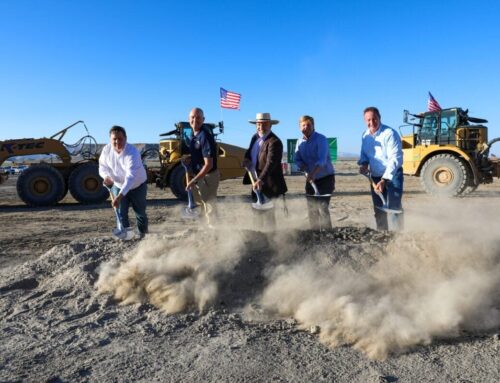New Orleans chose ease over safety with street barriers rated for 10mph attacks
January 5, 2025
Months before the deadly New Orleans vehicle attack on New Year’s Day, the city modeled scenarios for how an attacker could enter Bourbon Street at various intersections in a crew-cab Ford F-150 similar to the one used to kill 14 people and injure dozens more.
Engineers found such a pickup could enter the crowded tourist strip at speeds ranging from 12-70mph – yet city officials are installing new street barriers that can only withstand 10mph impacts, according to an April city-contracted engineering analysis and city bid documents reviewed by Reuters.
Those new barriers, or bollards, had not yet been installed on Bourbon Street on New Year’s Day but are planned to be by the 9 February NFL Super Bowl in New Orleans. The documents reviewed by Reuters, which have not been previously reported on, make clear that the system won’t be able to prevent vehicle attacks at moderate to high speeds.
In selecting the new bollard system, the city prioritized ease of operation over crashworthiness because of chronic problems in operating the old one, according to the documents and a source with direct knowledge of the city’s Bourbon Street security planning. Unlike some pedestrian-only zones, such as in New York City’s Times Square, Bourbon Street is open to regular vehicle traffic for much of the day, requiring city officials to block parts of it off from surrounding streets each evening.
Since the New Year’s Day attack, New Orleans officials have faced scrutiny over whether they left citizens vulnerable as crews were removing old bollards and installing new ones. But neither barrier system would have prevented the deadly attack, according to the source and a Reuters review of the city documents.
The city currently has no bollards at Canal and Bourbon streets, where the attacker entered. Instead, on New Year’s Day, the roadway was blocked by an SUV police cruiser parked sideways.
Attack suspect Shamsud-Din Jabbar, a US combat veteran from Texas, exploited another vulnerability in the city’s security planning: he squeezed his 7ft-wide pickup onto an 8ft-wide sidewalk between a drugstore wall and the police vehicle, stomping the accelerator and plowing through the crowd at about 3.15am.
Jabbar died after the attack in a shootout with police. Federal authorities have said he had been radicalized and pledged allegiance to the Islamic State militant group.
The city’s security modeling, in an engineering study conducted to help choose a new barrier system, had only considered scenarios where a vehicle entered Bourbon Street on the roadway – not the sidewalk. A vehicle could not enter most Bourbon Street blocks on its skinny sidewalks, which have other existing barriers such as fire hydrants and balcony or streetlight posts, the source said.
City officials would face “tough meetings” about the continuing vulnerabilities of the new bollards being installed now, the person said, which “wouldn’t have made any difference” on New Year’s Day.
New Orleans city officials did not respond to detailed questions from Reuters about their Bourbon Street security planning and the decision to select barriers with a 10mph crash rating.
The person with direct knowledge of the city’s security planning emphasized the difficulty all cities face in protecting against vehicle attacks while preserving access to routine vehicle and pedestrian traffic, including accessible sidewalks for people with disabilities.
The source said officials chose a bollard system rated for 10mph impacts from a company called 1-800-Bollards Inc. City bidding documents, dated in August and September, sought an installer of the system, calling it the “RCS8040 S10 removable bollard”. The city’s April engineering analysis describes the same product as having an “S10” crash rating and explains it can stop a 5,000lb vehicle traveling 10mph.
“Crash ratings are specified as S10 (10mph impact), S20 (20mph impact), and S30 (30mph impact),” the engineering analysis said.
The source said a barrier rated for 10mph impacts could still slow or significantly damage a vehicle traveling faster.
Representatives from 1-800-Bollards Inc declined to comment.
Two of the Bourbon Street attack scenarios modeled by city-contracted engineers involved entering the street in a straight line, without turning, after building up speed.
The study found a 2015 F-150 could achieve speeds of 50mph by accelerating from the stoplight across Canal Street, a wide boulevard with streetcar tracks in the median. The same vehicle could hit 70mph entering from the opposite end of the section of Bourbon Street that is protected by bollards.
Jabbar drove a deadlier weapon than the truck used in the report’s scenarios: a newer F-150 Lightning, a much faster, heavier and quieter electric vehicle.
During major events such as New Year’s or Mardi Gras, the source said, city security plans call for parking large vehicles at the ends of Bourbon Street that are most vulnerable to high-speed vehicle attacks. But such measures, the person said, are not practical on a daily basis in the crowded tourist zone.
Since at least 2020, city officials have studied how best to replace New Orleans’ failing system of street barriers to protect against vehicle attacks, the source said.
The city initially chose a system called the Heald HT2-Matador that allowed workers to move the barriers into position along tracks in the street, according to city documents. The source told Reuters the system was selected in large part because it had already been bid and priced by the federal government, allowing the city to install it faster.
But the barriers proved problematic under the rigors of Bourbon Street, and were often inoperable because the tracks became jammed with litter including Mardi Gras bead necklaces.
Because of those problems, the city prioritized factors including ease of operation and maintenance over crash safety ratings in choosing a new system, according to the source and an April 2024 report from Mott MacDonald, an engineering firm hired by the city to evaluate dozens of bollard options.
Representatives of Mott MacDonald did not comment.
The city chose the 1-800-Bollards Inc system with the 10mph rating, relatively lightweight stainless-steel posts that drop into street foundations, in part because the bollards could be installed and removed daily by a single city staffer, the source said. Those posts weigh 44lbs, the engineering analysis said, whereas similar, 20mph bollards weigh 86lbs.
The source said the primary concern of city officials, along with French Quarter resident and business representatives, was protecting pedestrians from vehicles turning onto Bourbon from side streets at lower speeds.
The report scored different systems on various criteria. The system ultimately chosen by the city received a deduction in its “safety rating” score because it did “not meet the project requirements specified”.
It received higher marks for the weight of the bollards and their low costs.
Search
RECENT PRESS RELEASES
Related Post




